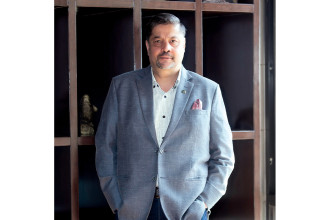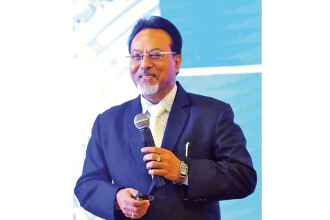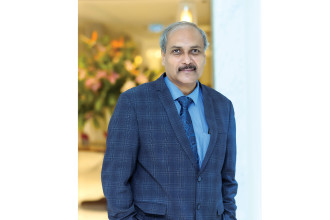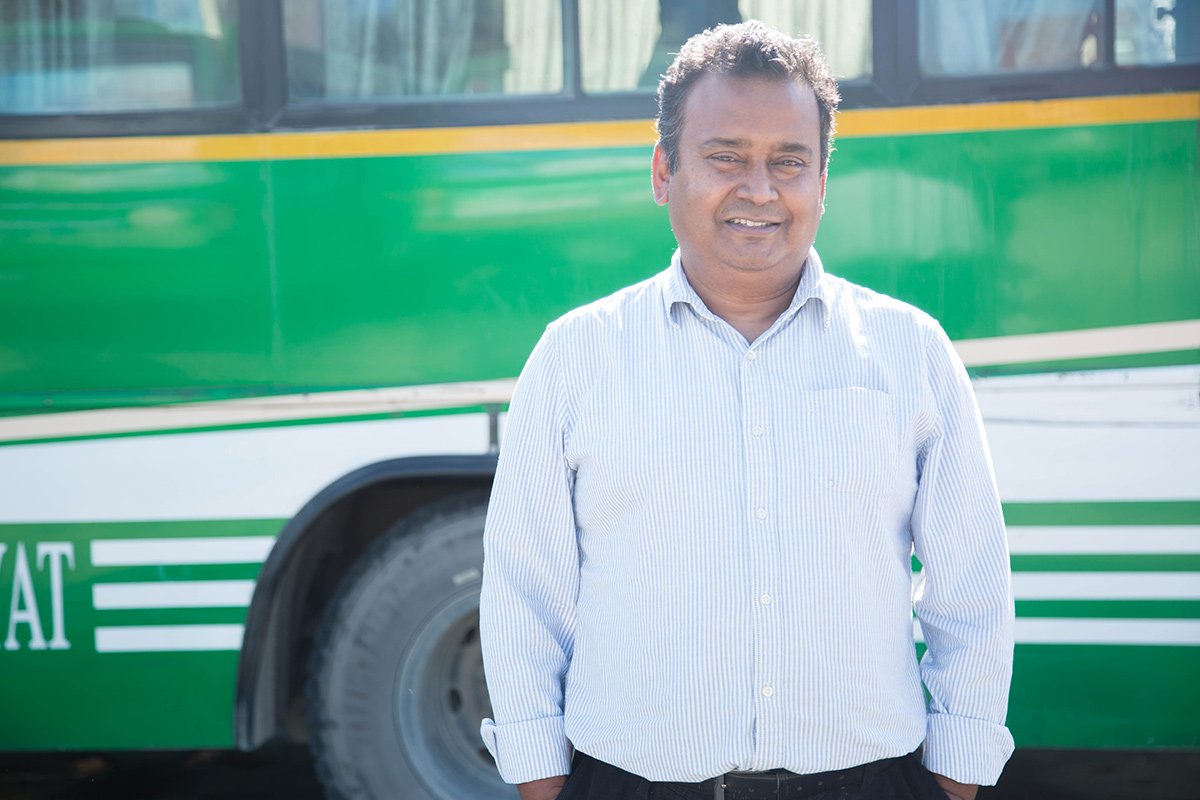
Bhushan Tuladhar, Board Member of Sajha Yatayat, is currently engaged with the organisation’s efforts to shift to electric buses by 2025. Though the task looks simple on paper, he says, there is a lot left to be done to get the processes and procedures correct and in place. An expert on environmental issues, Tuladhar shares that many people have placed a lot of faith on his expertise to make this switch to electric vehicles, which has added to the responsibility. However, not one to back out from any challenge, Tuladhar, who is also Chairperson of Environment and Public Health Organisation (ENPHO) and Clean Energy Nepal (CEN), says that he has accepted the task head-on and will make sure this transformation of Sajha Yatayat will happen within the stipulated schedule.
“If there is one thing that everybody needs to be aware of in the current times then it is climate change and its adverse effects on humankind,” he states emphatically.
Prior to being associated with Sajha Yatayat, Tuladhar also served as Chief Technical Advisor, South Asia for UN-Habitat’s Urban Basic Services Branch and headed the Environment Department of Kathmandu Metropolitan City. He was also a member of Nepal’s Climate Change Council, headed by the Prime Minister.
Tuladhar has a Master’s degree in Environmental Engineering from Cornell University and over 25 years of experience of working on urban environmental issues.
In this edition of Business 360, Tuladhar walks us through the future plans of Sajha Yayat, and gives insight into public transport and climate issues.
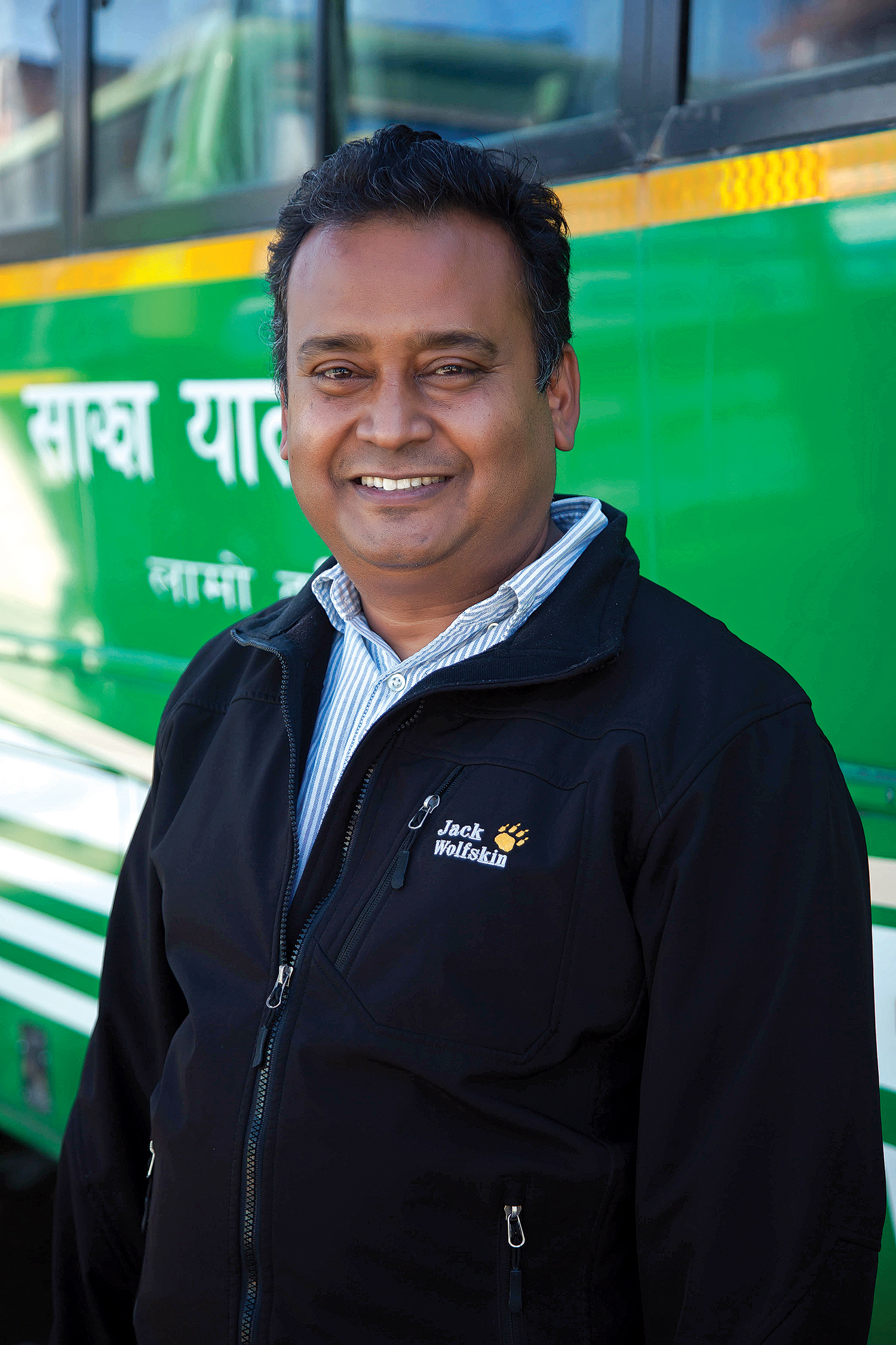
What are your plans for Sajha Yatayat?
Sajha Yatayat has been around for about 60 years and was one of the first transport cooperatives to be established. Within this period, we have been through a lot as an organisation that also came close to closing down at one point of time. In fact, there were plans to liquidate the business but a few friends got together and fought a court battle to bring it back to life. We were determined to have Sajha Yatayat back on its feet as our goal is to raise the standard of public transportation in Nepal. What we all have to understand is that public transportation is very important for any city, it is the backbone of any transportation system. As a city expands the government might widen the roads and there might be other forms of transportation but what you will require most is a good public transport system. In Kathmandu, the private sector is majorly involved in the transportation sector but for things like transport, health and education, the role of the government is equally, if not more important. However, too much government interference is not good either. It must be a balanced mix as it is with Sajha where both the government and private players have investment. One of the major reasons for our roads getting congested is due to private vehicles. And I don’t blame those who buy their own vehicles. What we have to focus on is providing good public transportation so that people do not think of owning a private vehicle. That is what we are focusing on – good service in terms of punctuality, frequency, network and also having a fleet of well-maintained and hygienic buses. We also need to be aware of the affordability. Public transportation does not only mean reaching from Point A to Point B, it is building a network where any person living anywhere can access it. So, we are working on these areas. We do operate buses that comply with the Euro IV environment measures but that is not enough, so we plan to go electric. We have to take care of climate issues. Another important aspect we have stressed on is to make our system friendly for differently-abled people too. There is still a long way to go but we have started the process, we just need to now give it a proper conclusion. Realising the need for municipalities to also take ownership of the public transportation system, we also have Kathmandu and Lalitpur municipalities as shareholders on our board. We are in touch with other smaller municipalities too because at the end of the day we need a proper transport system not only in Kathmandu valley but across the nation. There is a famous quote by Enrique Peñalosa, the Mayor of Bogotá, “A civilised city is not where the poor ride cars, it is where the rich ride public transport.” If you look at it closely, that is true. In many big cities around the world, Hong Kong for example, 85% of the trips are on public transportation. That is why even though it is a crowded city, Hong Kong runs very efficiently. That is where we are heading towards.As an active board member of the company, what are the challenges you have to constantly face?
The public transportation sector as a whole is facing a challenge, particularly due to the coronavirus pandemic. The pandemic was all about a) lockdown: which means basically restricting mobility and b) social distancing: which means avoiding crowds. In a way, everything that public vehicles was providing was restricted as we were not allowed to operate and social distancing is very difficult in public vehicles. All public vehicle operators faced difficulties in terms of demand, revenue, and so on. Other than that, another challenge we face is abiding by government regulations and also competing with the private sector. Working almost as a government body in a sphere that is dominated by private companies is a struggle. The third challenge is the public transportation system in itself because it is such a chaotic sector, it is not well managed as a whole. There is lack of a proper monitoring system. Everyone will benefit if the whole public transportation system were to be better managed. A survey conducted about ten years ago states that about 27% of the trips in Kathmandu valley were made through public transport. We feel that this percentage can be doubled. Rather than stealing a share of the pie we should work towards expanding the pie itself so that everyone gets a bigger slice. Public transportation is a very traditional sector like how digital payments aren’t as common here as it is around the world. The reason for this is it requires a network. It doesn’t make sense if I have to carry a card for Sajha Yatayat, another for Mahanagar Yatayat, and another for Nepal Yatayat. There has to be a unified system and that is something the government hasn’t been able to work on. These are some challenges we face apart from institutional ones. Within Sajha Yatayat and the broader sector, there are financial challenges. The market is not a problem as such, but to maintain the quality of the product and services we deliver is a challenge.
Are there plans to expand the network of Sajha Yatayat within Kathmandu valley? What about long-distance routes?
Definitely, there are plans for that because that’s the need today. If public transportation is not accessible easily then people who have the resources will switch to private vehicles. Moreover, we also need to expand so that even the poor can reach their destination comfortably. If you look at it closely there is hardly any public transportation in the core areas of Lalitpur so we are working with the municipality on it. The story is the same in Kathmandu too. If you are living in Jaisidewal and want to go to Thamel then you have to walk. So, there are some core areas that require public vehicles. We want to start a hop-on, hop-off type of service in Kathmandu which can be used by both the locals and tourists. The inner lanes in some parts require smaller vehicles so we have started homework on acquiring smaller vehicles like the golf carts that some resorts have deployed. Having a good public transportation system will also boost tourism. We are holding talks, for instance, with Lumbini Development Trust because many people visit Lumbini and then return. However, there are places like Taulihawa which are connected to the life of Buddha and hold great religious and spiritual significance. If we could provide an efficient transport service, then we could develop a circuit for tourism.What can be done for proper traffic management?
The main thing we need to realise is that our streets are meant for everybody. It’s urban traffic. Urban traffic consists of a mixture of pedestrians, cyclists, cars, trucks and buses. The point is to try to separate it as much as possible because all these modes have their own characteristics. We need to separate pedestrians from the roads because they cause a lot of disturbances and are prone to more accidents. Pedestrian traffic is very important because even if you have a car, you need to park it somewhere and go on foot. Everybody walks. Pedestrians should always be priority number 1. The next in line are cyclists, and then comes ride-sharing vehicles. Only then comes private vehicles. Once a hierarchy is set, you provide the space and services based on the priority. In the case of public transportation and buses, yes, the buses are big in general. But if you look at it in terms of square foot per person, it takes up little space as it is transporting 80 people at once. So, it is important to give it the space that it requires. Many foreign countries have a separate lane for buses called bus lanes. With this facility, buses will move very fast. It won’t be stuck in traffic jams as much. People stuck in traffic jams in cars might see this and say ‘Oh the buses are moving quite smoothly. I’ll ride buses from tomorrow’ and may leave their vehicles at home. This is how we can reduce traffic congestion. Make buses more efficient and comfortable than a car. Developed countries have introduced a Bus Rapid Transit (BRT) system. This is a system that gives buses the service and space of a metro system. Some people also call it metro on wheels. You buy your coupon in advance, the gate goes up and there is a holding area where you sit and wait. After that you get in the bus and it is moving fast. Another bus arrives right after one leaves. The bus driver doesn’t have to worry about how many people ride these buses, he just needs to stick to the time. People might say that we lack space to do so. Space is something that depends on who you want to give it to. If you give the space to private vehicles right in the beginning, of course there will be no more remaining for buses, cycles, trucks or pedestrians. For instance, if we make an eight-lane road without any bus lanes and cycle lanes, obviously there will be no space to make the lanes after the roads are made. These roads need to be people-centric rather than car-centric. Traffic congestion will drop substantially if we start moving people faster through the roads. If we keep feeding the cars, congestions will keep getting bigger. Do you feel public transportation fare has been set in a scientific manner? There are reports of lakhs being amassed by some operators as the bus staff oftentimes do not return the change to passengers. The fare is obviously not set either in a scientific or practical manner. The government has stopped printing currencies of Re 1 and Rs 2 denominations and we only have coins which are quite burdensome. This has been causing friction between the bus staff and passengers. There are some bus staff who do not give back the change and at the same time there are passengers who just give Rs 15 instead of Rs 18 and walk off. The fares could be made into round figures but by increasing the distance one can travel. To be honest, public transport is not a profit-making business. There is a very slim profit margin, if any. The public transport operators in other countries don’t compete for the passengers but rather for the routes. This GCC model is also relevant in India, where people bid for specific routes and timings and distance. Whoever bids the lowest per km gets the route. So, the drivers pay for the routes and all the revenue they collect over their rides is given to the government. Until the government looks at public transport as a service that is to be provided to the public, this is not going to work and will only create friction between the transport operators and the public.Being a climate expert, what are the policies that the government needs to adapt over the course of time?
From a climate change perspective, there are two things: mitigation and adaptation. Mitigation means reducing your emissions and adaptation means there will be impacts no matter how much mitigation is done, so we will adapt our vulnerability accordingly. Nepal is in a wonderful situation where reducing our emissions is both beneficial for the public health as well as the economy. The reduction of carbon footprint after switching to EVs is just a bonus for us Nepalis. Firstly, as a policy, reducing emissions from transport and cooking should be prioritied the most as it benefits a majority of the people. Sixty-six percent of our people still use woodfire for cooking purposes, which means if we switch to cleaner modes then two-thirds of women who are suffering from the worst kind of pollution will get access to cleaner air. Our climate policies need to be integrated with all other policies.What relevance do conferences like COP 26 have for Nepal?
I believe in ‘Think Global, Act Local’. As a global community, we are a part of it so we should put our voices out there and that makes it definitely relevant, whether it will be heard or not is subsidiary. We should keep raising our voice, tell the global community that emissions need to be reduced, build alliances with other similar countries, etc. All of this should be done, there is no doubt about it. When our Prime Minister went to Glasgow and made a bold commitment, he needed to call his cabinet together and affirm to them what needs to be done because of his commitment. We do have systems to do that. Two years ago, the government came up with a new law for the environment in which they have a place for an Environment Conservation and Climate Change Management Committee headed by the Prime Minister. However, even after two years, no such committee has been formed. This needs to be looked into immediately if we are to fulfil the pledges we make in international forums. Another issue is that every person who buys petrol pays Rs 1.5 per litre as pollution tax. Over the years around Rs 4 billion must have already been collected but what is the government doing with that fund? Nothing. If the government wants to promote electric buses, it can invest half that amount in such initiatives. Surely the government needs money for public health and education, but why not for public transport? If the government can put its resources in the right places and do as they say, there will be electric public transport everywhere.Is Nepal ready for carbon trading?
Yes, we are but we need more preparations. It’s being done right now too, for instance the biogas plants we have, the carbon we save through that is traded. Even the carbon from forests, and the private sector such as Yeti Airlines do carbon credits. Obviously Nepal can do it and immensely benefit from it too. Another area where we can focus on is utilising solar energy. The price of solar power is getting cheaper and moreover, Nepal receives a lot of sunshine. We need to invest in solar energy and may be in wind energy too. There is definitely a place for solar power in Nepal’s market.
Published Date: December 14, 2021, 12:00 am
Post Comment
E-Magazine
RELATED Face 2 Face



